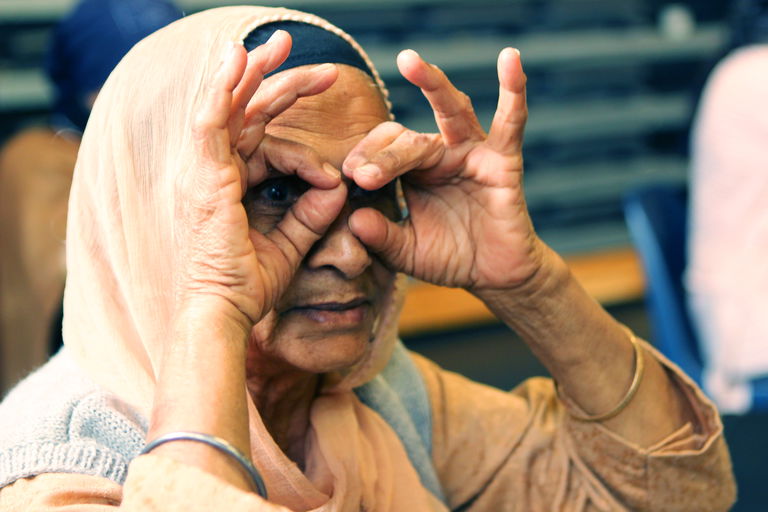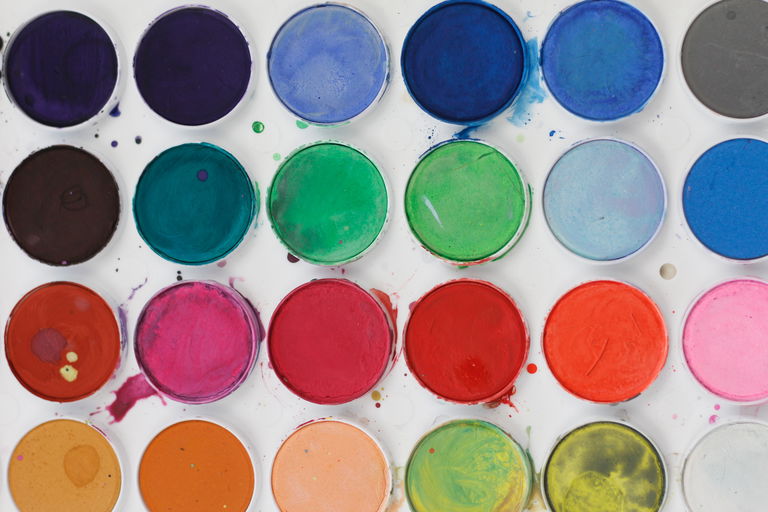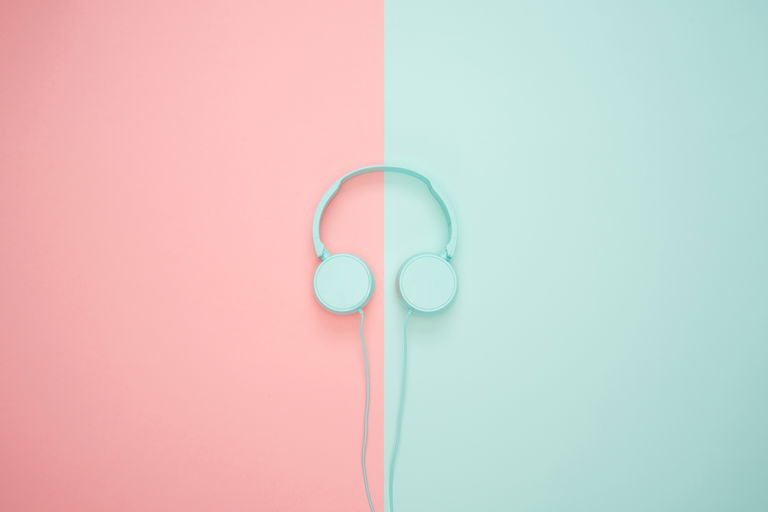
Building Mental Health Through Art
Leah Sandals
Mar 19, 2019
Top image: Labels, Hanan Hazime.
When teens walk through the doors of iHuman Youth Society, they find 20,000 square feet of creative space.
There’s a visual arts studio with ventilated spray-paint booth. There’s audio gear for mixing beats. There’s a fashion studio with sergers and sewing machines.
There’s also social workers and addictions counselors—some of the more traditional supports for youth with mental health and addictions.

“Our arts-based approach gives us the capacity to allow social workers and addictions counselors to engage in a different way than if we were a social services agency,” says Steve Pirot, iHuman Youth Society’s artistic director. “I’m fond of saying 90% of our programming is that the studios are open.”
Young artists use the studio in different ways. Some mend holes in their jeans. Others paint narratives of addiction on canvas. And others design graffiti using Cree syllabics. The latter activity is part of the Cree Dictionary Project, a program that recognizes the intergenerational Indigenous trauma caused by residential schools and racism.
“We provide a safe space for young artists to express themselves,” says Pirot, “especially given that we might be the only place they have to get it out.”
That’s just one of Canada’s many arts programs aimed at supporting mental health and resilience. From Fredericton’s Recovery Art Studio, to Montreal’s Les Impatients, to Nunavut’s Alianait Mental Health Awareness Tour, this movement is growing.

Portable art carts are a newer resource for inpatient treatment at the Centre for Addiction and Mental Health. “Creating and engaging through art provides an alternative way to cope and an outlet to channel emotions,” ihuman-youth-visual-art-studio-2CAMH says. But you don’t have to be in a hospital setting to benefit.
Ajay Heble, director of Guelph’s International Institute for Critical Studies in Improvisation, says music—particularly improvised music process—can boost wellness.
“We have sites across Canada at six universities, and we have 40 partners, from community health centres to music festivals to art galleries,” says Heble. “Music’s not a surefire corrective to all the world’s problems—but it can play an important role in terms of quality of life. We’ve seen the benefits and impacts for multiple years with multiple projects.”
For a decade, Heble has worked with KidsAbility and the Guelph Jazz Festival, studying how musical improvisation helps kids with complex special needs. Each year, KidsAbility youth do musical improve workshops with a professional artist, culminating with a performance at the festival.

“We found increased self-esteem on the part of youth participants, and improved self-expression and self-confidence,” says Heble. “There’s increased ability to listen, to focus, an increased sense of cohesion and leadership skills.”
Improvising can also make room for acceptance of difference—a very important factor in mental-health and neurodiversity settings.
“Improvising helps creates a space outside of the usual limiting expectations,” Heble says. “There are no wrong notes in an improvised musical performance.”
Music is also a tool used by Workman Arts’ Bruised Years Choir. This Toronto group is comprised of artists living with mental health and addiction issues. They’ve sung at the Invictus Games, the Luminato Festival, and the Royal Ontario Museum.
“The feedback we get from artists in our programs is very positive,” says Claudette Abrams, Workman Arts’ visual arts manager. “Data indicates that artists gain confidence from participation and feel more connected to others. They feel more prepared to pursue their ideas and goals.”
Abrams first came to Workman Arts as one of its 300 member artists. The facilities include visual art, theatre, and dance—Abrams herself does a lot of photo-based artwork. But as in the choir, there’s strength found in shared creation and experience.
“I felt very much a sense of belonging” upon joining Workman Arts, says Abrams. “Outing yourself through your artwork is a real challenge, and there’s a lot of stigma; it’s hard to do that on your own. Having a supportive community for voicing concerns helps.”
Vancouver’s Recovery Through Art Society also emphasizes peer-to-peer learning and support.
“When we started, almost all the instructors were trained staff,” says Ann Webborn, occupational therapist at Recovery Through Art. “Now, we encourage our members to become assistants in class, and then instructors. Currently, 95% of the instructors are people who’ve had mental illness or addictions.”
All instructors are paid, too, and get the positive mental boost of helping others learn art techniques that’ve helped them. “It’s never good with a mental illness to be not doing anything,” Sean Kidd, CAMH’s chief of psychology, states. That “allow[s] for space and time to worry and ruminate.”
Recovery Through Art was founded by occupational and recreational therapists who recognized art’s benefits for their patients decades ago.

“The art studios are model for psychosocial rehab,” says Bev Knight, Recovery Through Art’s chair. “Art is a great form of occupational therapy because you can do it at home, or you can do it with a group. You don’t need a lot of expensive equipment. It’s a life-long skill that’s really healthy.”
At a scary and isolating time, being a student in Recovery Through Art’s scheduled classes offers a sense of purpose and commitment that supports mental health.
“After some people have had breakdowns, their confidence is so low,” says Webborn. “Some people with schizophrenia have lived through times when they didn’t know what reality was, so getting out [of the house] can be very intimidating.”
In the studio, though, “there can be a warmth… people come out and they have a schedule in their lives. They meet other people. They have peers who they start to relate to. They enjoy the artwork. They find they can do something. And the confidence grows.”
A Recovery Through Art member once wrote: “The studios focused on my ability rather than my disability.”
And that, in itself, is a very beautiful—and very healthy—thing.
This is the second instalment in a special blog series by Leah Sandals, which examines Culture Days’ 2019 theme of Creativity, the Arts, and Well-being. Read the rest:




